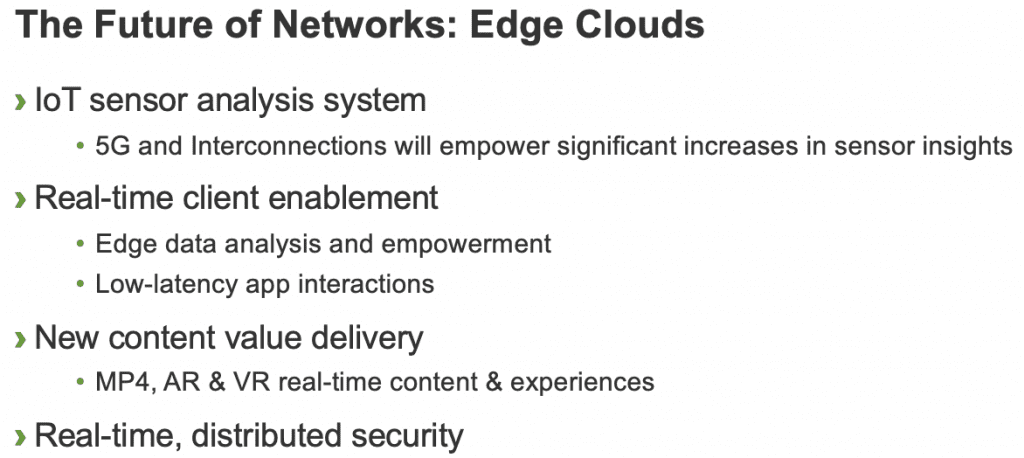 As noted in my sessions at PTC’19, every telecom and data center company has before it the opportunity to expand its market relevance in the rising era of 5G, IoT, and AI.
As noted in my sessions at PTC’19, every telecom and data center company has before it the opportunity to expand its market relevance in the rising era of 5G, IoT, and AI.
According to Forrester’s Global Business Technographics Mobility Survey, 63 percent of enterprises are implementing or expanding their Internet of Things (IoT) solutions. And these investments are driving spending that will exceed USD 400 billion by 2023. What is behind these investments is the desire to significantly improve data insights about field equipment, assets, and customer engagements.
Broadly Applicable IoT Use Cases Apply to Many Firms
 Source: Forrester Report “Internet of Things Heat Map”
Source: Forrester Report “Internet of Things Heat Map”While many people assume the lead investors in IoT are manufacturers, as they sensor-enable their devices, we are seeing significant IoT investments by financial services, retail, oil and gas, healthcare, government, and media and entertainment companies as well. And the most significant focus of their investments center on driving time-sensitive insights from this equipment.
 Source: James Staten’s presentation at PTC’19
Source: James Staten’s presentation at PTC’19There are three clear circumstances of IoT data analysis, two of which can best be empowered by vendors who deliver edge cloud services.
1. Insights from Data Aggregation: The first and most common scenario today is to pass sensor and edge equipment data back to the corporate data lake and aggregate it with data from other devices, historical and customer data sets, and third-party data. Then process this aggregation to determine the relevance of the current insights coming from the edge equipment. For example, analyzing data from manufacturing equipment across multiple factories allows an enterprise to assess the efficiency of its processes, opportunities for improvements, and other insights to drive up their effectiveness.
2. Edge Device Empowerment: Enable the edge device itself to collect and analyze its sensor information and then take actions or pass on its conclusions. This is the second most prominent edge analytics play and requires the edge device itself to contain, compute, and store capacity and AI algorithms to draw these types of conclusions. A classic example is the typical modern commercial airplane, which uses real-time insights to help ensure safe travel for its passengers.
3. Multi-Device Alignment: This involves aggregating data from multiple edge devices in the same geographic area to determine if the devices are experiencing the same effects. This methodology would allow various cars and trucks in a particular city, for example, to assess the safety of a set of roads when each, individually, is experiencing weather or road damage sensor findings.
Scenario number three is the most obvious use case that an edge cloud can empower, as sensor data insights from multiple devices can be assessed fastest when aggregated through an edge gateway computing device on a high-performance network. And given the size and volume of sensor data that should be collected, achieving near real-time insights will benefit significantly from all the vehicles within range of a 5G network.
PTC market leaders should not simply enable this scenario as the networking provider, but should invest in edge gateways, AI algorithms, and a data platform service that enables the source customer to leverage the insights made possible by your edge cloud service, as well as share their data and insights of their ecosystem on your platform.
The other potential play for PTC leaders is to add integration between scenarios three and one. Just as you currently enable devices and customers to connect across metros with your network, adding on global data aggregation services will raise its importance, value, and significance, as IoT and mobile device insights rise to become experience-improvement standards. This is a play where edge cloud providers who have direct, private interconnections to the leading mega-clouds, top SaaS providers, and across corporate assets can deliver the most benefits. These types of connections can be protected from the most common security breaches, forthcoming risks from quantum computing, and deliver cost efficiencies that raise customer loyalty. Key to the latter is to deliver these connections via software-defined networking with on-demand cloud-based pricing. This helps customers tie your edge cloud to specific apps and services and align their costs and consumption to the patterns and growth of these application scenarios. This approach will be crucial to becoming a winner in this market.
To learn more and how best to deliver these services and differentiate your solutions via emerging technologies, please reach out to us at Forrester for advisory assistance. If you are headed down this path and feel you are well positioned for broad market success, let us know so we can help share your story with our enterprise and government clients.
James Staten, VP & Principal Analyst, Forrester Research @Staten7




